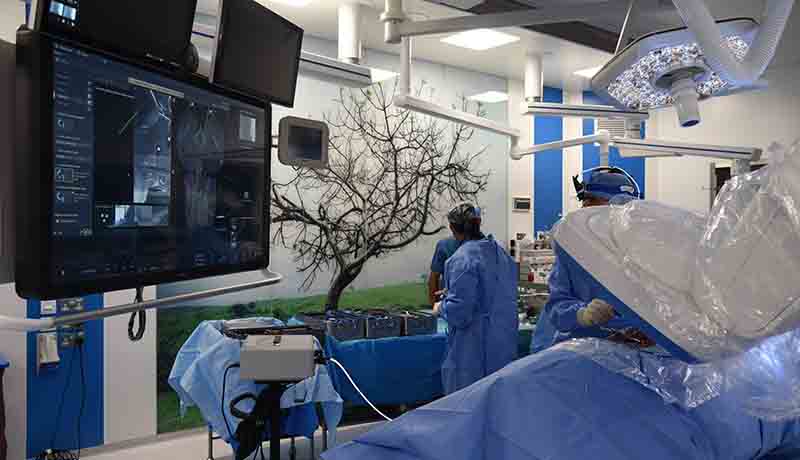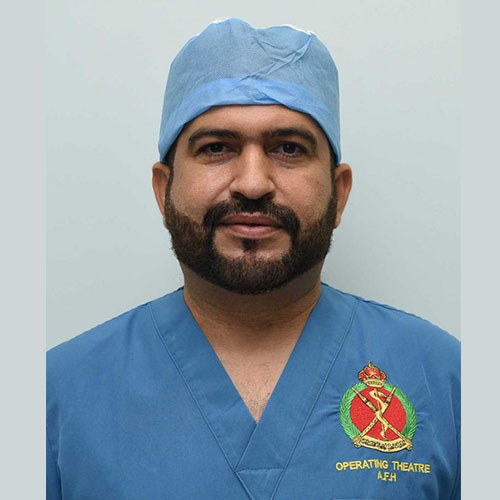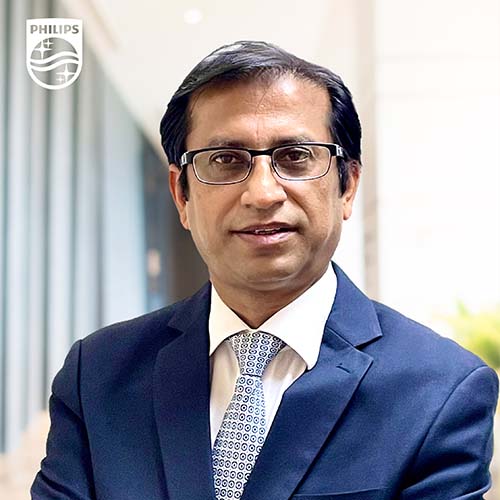
The Armed Forces Hospital in Oman has successfully treated the first patients using Royal Philips’ revolutionary 3D Augmented Reality (AR) spine navigation system. The surgeons employed Philips’ integrated Spine suite solution, which includes the company’s Azurion Hybrid OR with ClarifEye, an industry-first solution that integrates 2D and 3D visualizations with 3D AR navigation into one system. Using enhanced real-time imaging guidance, surgeons can define and travel along the essential pathway for precise device placement in both open and minimally invasive spine surgeries.
One of the first treatments in Oman, which was the first country outside of Europe to use Philips’ ClarifEye technology, was to treat a 51-year-old male patient with multi-level degenerative lumbar stenosis and was successfully treated utilising minimally invasive techniques.

“Philips’ new technology enables us to perform less invasive procedures and produce better outcomes for patients with spine conditions,” said Dr. Ahmed Al Jahwari, Head of Department Orthopedics and Spine Surgery at Hospital MoD, Oman.
He added, “Thanks to the high quality of the intraoperative cone beam CT imaging and the positioning flexibility of the ClarifEye system, we can ensure that implants are in place which lowers post-operative CT scans to check implant placements.”
“We are proud to collaborate with Armed Forces Hospital in bringing the breakthrough ClarifEye Augmented Reality Surgical Navigation technology that we believe will transform the way spinal fusion procedures are performed in the region. This is the first such installation in whole of META region that will help improve patient care”, said Manoj Arora, Business Leader, Image GuidedTherapy, Philips META.

“We are proud to collaborate with Armed Forces Hospital in bringing the breakthrough ClarifEye Augmented Reality Surgical Navigation technology that we believe will transform the way spinal fusion procedures are performed in the region. This is the first such installation in whole of META region that will help improve patient care”, said Manoj Arora, Business Leader, Image GuidedTherapy, Philips META.
“We’re excited that international access to ClarifEye is expanding, and more hospitals and patients will get to experience its benefits firsthand,” said Karim Boussebaa, Business Leader Image Guided Therapy Systems at Philips.
He added, “As the latest addition to Spine suite, ClarifEye adds a new dimension in surgical precision for patients. Through innovation, we want to innovate procedures and help clinicians to deliver on the Quadruple Aim of better health outcomes, improve patient experience and staff satisfaction, and lower cost of care – and ClarifEye is a great example.”
Treatment for spine problems is frequently time-consuming and delicate. Surgeons must take extra precautions to avoid damaging fragile neurological and circulatory systems around the spine. Traditionally, spinal surgery has been performed as a ‘open surgical’ operation, with surgeons manually touching the patient’s spine to place implants such as pedicle screws. As technology has progressed, there has been a shift toward adopting minimally invasive methods, such as small incisions in the patient’s skin, to limit blood loss and soft tissue damage, as well as postoperative pain. Rather of depending solely on a line of sight to the patient’s spine, surgeons can now use ClarifEye’s real-time imaging and 3D navigation in both techniques. Furthermore, compared to the prior standard of care, intra-operative image guiding improves clinical accuracy and results, with patients requiring fewer revision operations. The ClarifEye system outperformed open surgery pedicle screw placement without 3D navigation, according to data published in Science Reports (94 percent vs 89,6 percent ). The accuracy of pedicle screw placement during minimally invasive treatments was shown to be 98 percent in a clinical investigation employing ClarifEye.
Earlier this year, ClarifEye Augmented Reality Surgical Navigation was brought to the market. The Oman site joins a growing international ecosystem of innovation partners who have adopted this new solution, including the University Medical Center Schleswig-Holstein in Kiel, Germany, Karolinska University Hospital in Stockholm, Sweden, the Regional Hospital of Lugano, Switzerland, and the University Hospital of Strasbourg, France.
Philips is a leader in hybrid OR systems and cutting-edge surgical navigation technology that enables surgeons to perform image-guided, open, and minimally invasive spine surgery. Precision is critical when conducting sensitive jobs in spine surgeries to ensure the best possible outcome for patients. ClarifEye and Philips Image Guided Therapy System – Azurion – have partnered to provide key benefits like intraoperative cone-beam CT scanning with excellent image quality at controlled doses, 3D spine model-based planning for each pedicle, live augmented reality guidance, and intraoperative verification. It distinguishes itself from more traditional surgical navigation technologies by allowing surgeons to focus on the patient and procedures while enhancing surgical workflow.